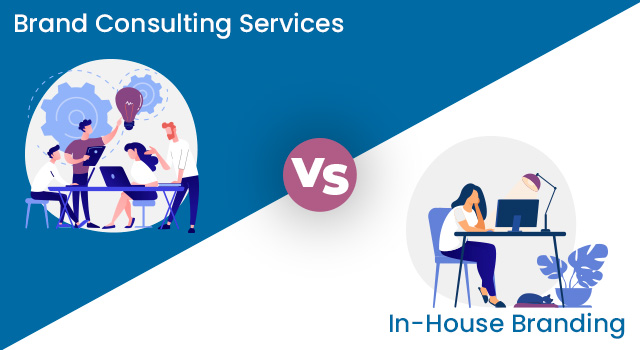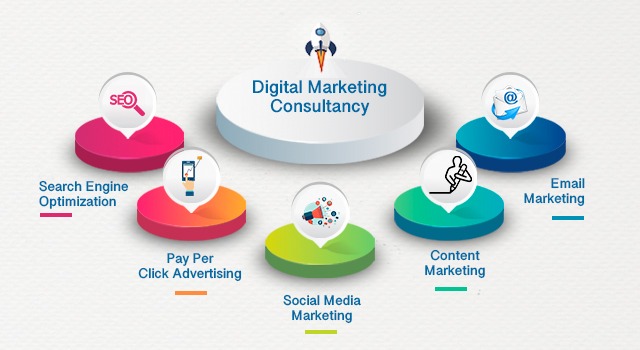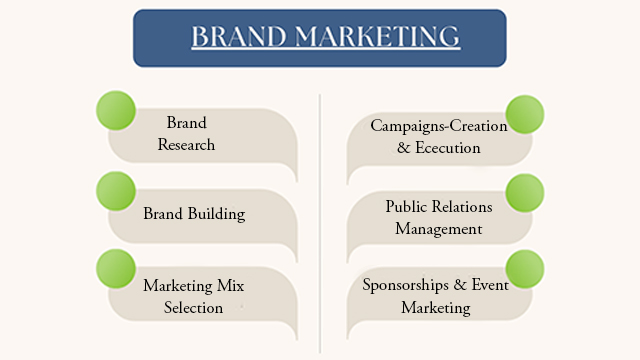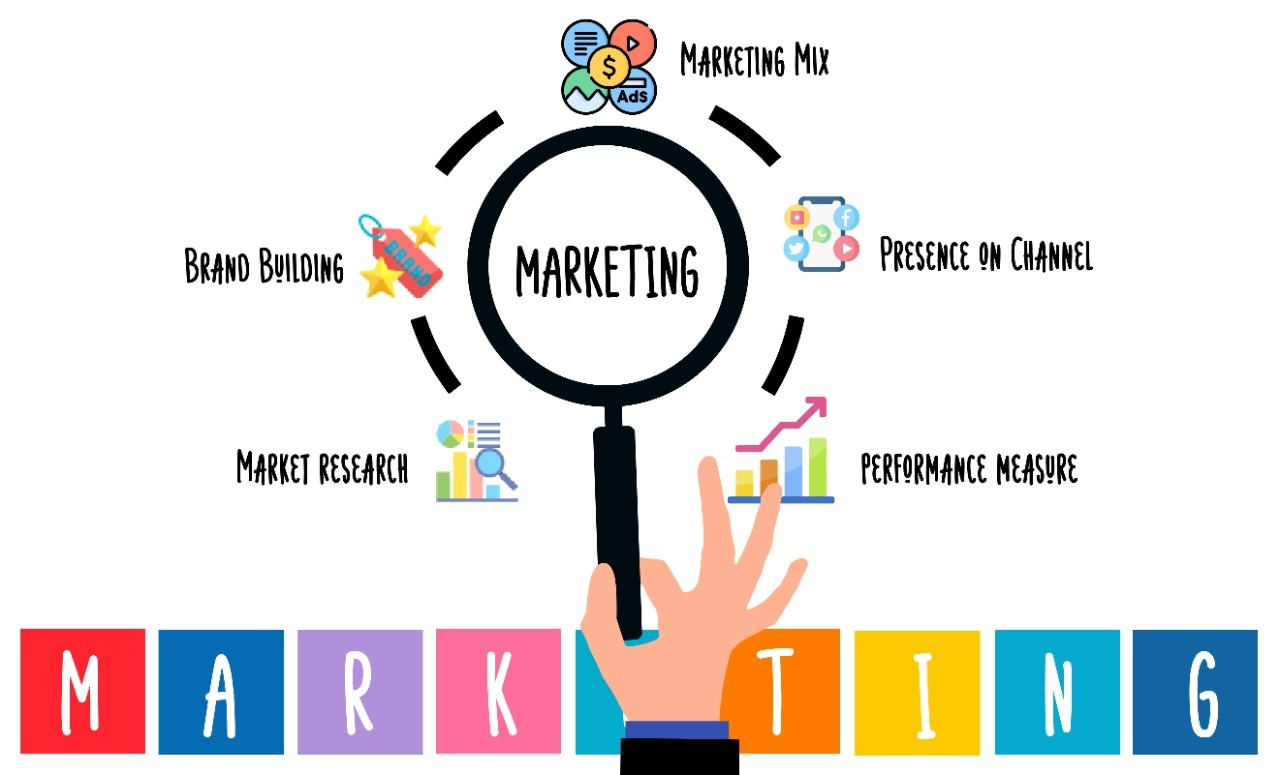The main character under the spotlight, the pink lotus among the green, and the vehicle with a red light on a crowded street –
– That’s what your firm is when it has a robust brand positioning statement under its wing.
Some statistics highlight that firms see a 26% improvement in Marketing ROI and a 15% reduction in internal decision-making time related to branding activities when they clearly define what makes them stand out.
Hence, today we will share the 5 Steps we use at our brand marketing firm to help clients craft one –
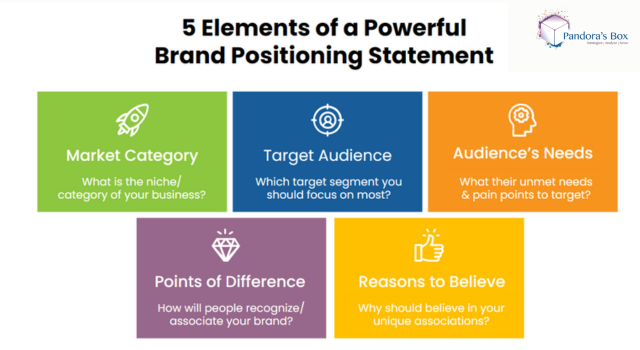
What is a Brand Positioning Statement?
It is a statement that highlights your value proposition, what you do and don’t, and whom you target and don’t – along with your brand’s purpose and values.
Why is a Brand Positioning Statement Important?
It enables your –
- Business Strategy:
Like your vision and mission, your brand positioning brings focus and clarity in your decision-making – whether it is about expansion, diversification of target market or segment, or related to your firm’s internal areas like team-building.
- Product Development:
With your target audience as the central focus, you can guide product research and innovation to ensure it fully addresses their unmet needs and pain points.
- Brand Marketing Strategy:
When you have a clear profile of your brand and ideal customers, you can choose the right marketing mix and craft the right content and campaigns to fulfill your goals and enhance your image.
- Sales & Customer Service:
A clear idea of what sets you apart will greatly reflect in all stages of your sales cycle – reaching, nurturing, converting, and retaining the leads and how you treat them in all those stages.
How to Write Your Brand Positioning Statement?
- Specify your Market Category
It’s the first and most crucial step for your brand positioning as it will define the category for your business, which will then determine your target segment, your competitors, and how your buyers search and shop for products.
Your category can be as broad as “protein powder” or as specific and focused as “plant-based organic protein.” It depends on your ambition and scale.
Yes, when you start you will choose a broad niche, for example, “women’s skincare products”.
Then you can drill it down more once you have built your products, thoroughly tested it in the market, and know your target segment well, for example, “women’s skincare products with natural ingredients.”
- Identify your Target Audience
This step is highly interrelated with the first step.
Once you have chosen your category, you will also recognize which segment in your niche will give you the most value (higher ROI, Lifetime Value, and Loyalty).
It doesn’t indicate that you shouldn’t care about the other segments existing in your niche or that they won’t buy from you.
Let me explain it with an example.
Suppose, I have a restaurant that sells vegetarian food.
It’s open to all types of customers such as those who eat vegan or non-veg, but the ones who eat vegetarian are highly likely to resonate with my brand more and stay loyal to it.
Hence, you must build an ideal customer profile to get a clear picture of how to position your brand to get the most value from them.
- Figure out your Target Market’s Need
The last step gives you almost all the pieces you need to finish the picture of your target audience, except for one: their unmet needs and pain points.
The main purpose of this step for your brand positioning is to find 2 things –
- What are the unmet needs and pain points of your target audience that they don’t explicitly share but affect their decision-making deep down?
- What are the products & services they currently use to fulfill those unmet needs?
It will help you unbox how you can become their first choice among all the alternatives offered by your direct and indirect competitors.
- Highlight your Unique Points of Difference
It won’t be an overstatement to say that you now know your target segment’s latent needs and pain points, but what’s next?
It’s time for you to take a step back and evaluate –
- What are your unique points of difference? How does your brand get recognized (is it the experience, product functionality, or price?)
- Do any of your brand associations fulfill any desirable benefits your customers value?
- If yes, will choosing a specific association for your brand’s positioning keep you relevant as you target a new segment, market, or product line?
Once you have made a list of associations after this step, share it with your stakeholders and ask for their observations before you choose one main point of difference.
- Give Reasons to Believe
Now, you are just a “Reason” away from giving the final touch to the picture of your brand’s positioning statement.
Here, you need to back the claims made on your unique points with either tangible numbers or your business plans and purpose strong enough to defend.
You have to give a reason to your target audience to believe what you say and then associate your brand with your points of difference.
Wow! You have all the data you will need to craft a powerful brand positioning statement.
It’s time to put it all in the template below and raise a toast!
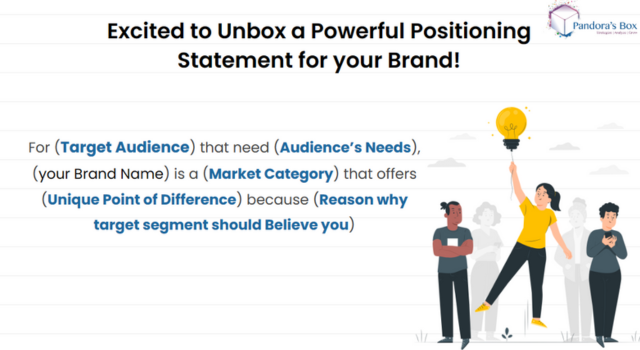
Which Factors to Consider While Crafting Your Brand Positioning Statement?
- Relevant & Audience-oriented –
It should be relevant to your brand’s core purpose and your audience. You have to strike a synergy between them to build an image that you’re the best for your target segment.
- Hard-to-copy & Benefit-driven –
It should highlight a clear, desirable, and hard to imitate benefit the audience will receive if they choose your brand over the competitors.
- Clear & Memorable –
It must share the benefits you offer, the reason to believe, and your unique points in an easy-to-understand way.
- Defendable & Sustainable–
It can withstand and adapt to the changes in your market’s landscape and competitor’s strategy to stay on top.
Your brand positioning statement is like the red light on your ship that helps it stand out in the sea of boats and attract the attention of your audience sitting in the lighthouse.
That’s all from our side.
You can book a workshop/ training session with Mili Kataria to learn and develop your branding foundations – brand purpose and values, identity, positioning, and narrative.
Pandora’s Box is a Brand Marketing Agency that helps firms build and scale their brand through research, strategy, implementation, and analysis.


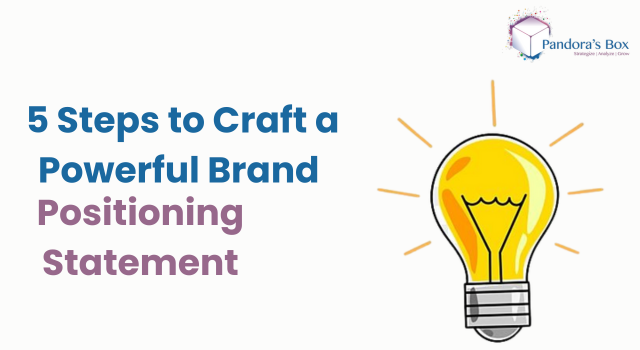

![5 Steps to Write an Impactful Vision Statement [+FREE Template] 4 Vision Statement](https://pandoras-box.in/wp-content/uploads/2024/05/Vision-Statement-2.png)





![4 Key steps to Effective Strategic Planning [Learn from Top Consulting Firm] 10 4 Key Steps to Effective Strategic Planning [Learn from Top Consulting Firm]](https://pandoras-box.in/wp-content/uploads/2023/08/4-Key-Steps-to-Effective-Strategic-Planning-Learn-from-Top-Consulting-Firm.jpeg)




